Insects on Romney Marsh
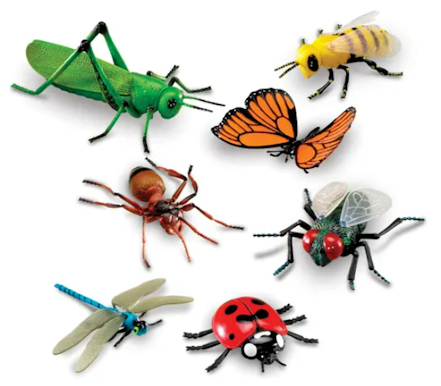

Greatstone Sand Dunes are a breeding area for the Brown Tail Moth Caterpillar. The caterpillar is a voracious eater of vegetation, especially in the spring, and although it prefers hawthorn and blackberry, it will eat practically any type of tree or bush. The caterpillar also releases irritant hairs into the air which can cause skin irritation, and can affect some people quite severely.
As you can see from the picture on the right, the caterpillar of the Brown Tail Moth is brown, has a dotted white line down each side and two very distinctive red dots on the back of its tail.
The moths lay their eggs in the mid summer and the caterpillars hatch and form silk tents (see pictures below and right) in which they hibernate. Each tent contains large numbers of the caterpillars and they remain hibernating until the arrival of warm weather brings them out.
The caterpillars carry up to two million spiked and barbed hairs which can penetrate skin, causing an irritant reaction. Anyone who inhales or comes into contact with the tiny bristles can develop severe breathing problems, headaches, rashes and even conjunctivitis.
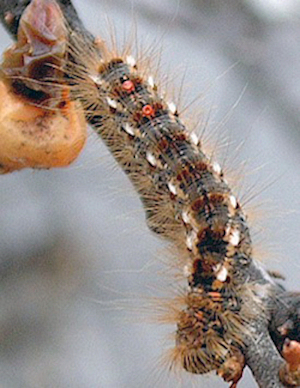
The Brown Tail Moth Caterpillar
The caterpillars continue to be a hazard for another four weeks until their development finishes when, as moths, they pose no threat.
It was evident during the winter of 2010/11 that the number of the caterpillar cocoons that formed on the bushes, particularly the sea buckthorn, in Greatstone Dunes were larger in number than in many previous years. This, together with the above average temperatures experienced in April 2011, gave rise to exceptionally large numbers of the caterpillars. As well as on the dunes, where they would normally be found, they over ran public areas of the beach, beach access footpaths, the toilet block in the main car park and many other areas.
Once alerted to the problem by local residents, Shepway District Council (SDC) posted warning notices and undertook spraying of the caterpillars. The spray takes up to 7 days to work effectively and so does not show an immediate response. This is because it is based on a bacteria that the caterpillars need to ingest before it can work.
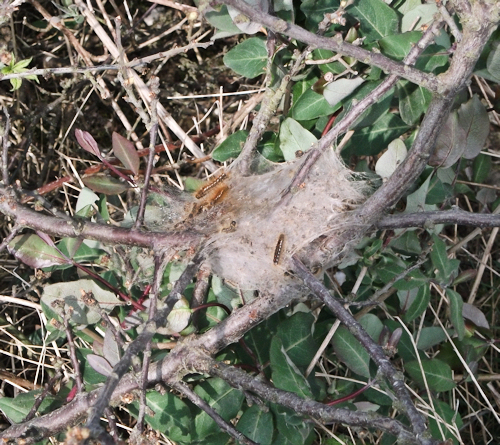
A Brown Tail Moth Caterpillar Tent
The root cause of the infestation in April 2011 was that the large number of cocoons in the dunes (see picture below) were allowed to remain until the warm weather 'brought them out' in very large numbers. In particular, had the bushes with the cocoons where they are close to public places and local businesses been destroyed in the winter months, then perhaps the outbreak could have been avoided, or at least minimised.
However, this is more easily said than done. Greatstone Dunes are a Site of Special Scientific Interest (SSSI), which means special permission is required from Natural England to destroy all these cocoon infested bushes.
SDC have said that in the longer term they are planning a programme of breeding interruption during the summer using a pheromone system to attract male moths and prevent them from breeding. They significantly increased the work that they do to remove and burn caterpillar tents during. This will include the removal of some of sea buckthorn.
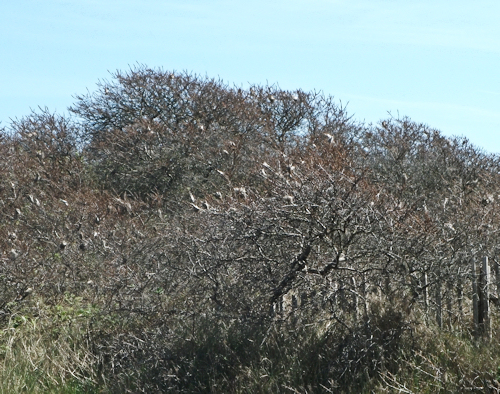
Brown Tail Moth Caterpillar Tents on Bushes in Greatstone
In the past SDC and the Romney Marsh Countryside Project (RMCP) have had the issue of residents not wanting the sea buckthorn removed in the Dunes due to privacy and landscape. However, on a biodiversity and wildlife issues, the amount/area of sea buckthorn in Greatstone Dunes is far too much and the proposal is to reduce the area of sea buckthorn down to 15% over the next 5 years, using staff, contractors and volunteers. This will be a joint partnership between SDCl, RMCP and Natural England and serious scrub removal costs money, the grants and contractors all take time to apply for, sort out and implement.
The RMCP have organised work parties/volunteer days in Greatstone Dunes, since 2011, to remove sea buckthorn and they rely on volunteers to aid the management of these Dunes in the future. So the more residents which come along, the more benefits will be seen in our local wildlife in the Dunes. (Details of the days will be posted by the late summer.)
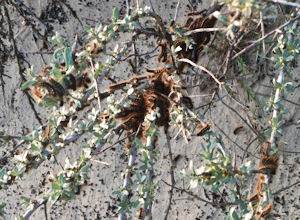
Caterpillars on a Bush near the Dunes
Brown tail Moths are found all over South East England and the same problems and issues are found across the region in many areas/towns etc. Greatstone had a bad year in 2011, but so did a number of other areas as well. Due to the “plague” proportions, spraying is a reduction process and will not solve the problem on its own. Driest and warmest spring on record = good breeding season for many insects.

The Emperor Dragonfly is a very large, impressive dragonfly which can be seen from June to August. It is a common dragonfly of large ponds and lakes as well as canals and ditches and is rarely found away from water.
The Royal Military Canal, Greatstone Lakes and many other expances of water on the Marsh are home to this dragonfly.
The female lays her eggs in floating pondweed. One of the largest dragonfly species in Europe, the emperor dragonfly flies high up looking for insect-prey such as butterflies and chaser dragonflies. It catches its prey in mid-air and may eat it on the wing.
The male Emperor Dragonflies are pale blue with an apple-green thorax and a black stripe running the length of the body. Females are similar but a duller greeny-blue. Both have greeny-blue eyes. Emperor Dragonflies are easily recognised by the combination of size and mostly blue colour.
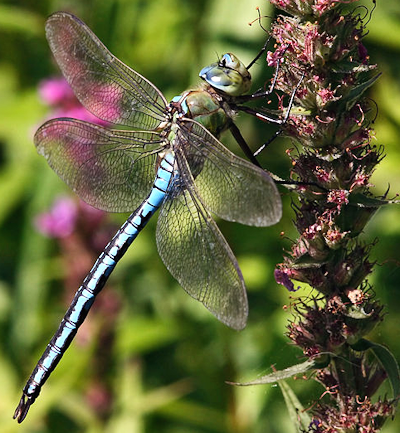
The Emporer Dragonfly

The Great Silver Water Beetle is a rare aquatic insect that can be found amongst the dykes on Romney Marsh.
The Great Silver Water Beetle is approximately 5cm long. It has a black body with a green sheen to it, however, when this beetle swims air bubbles get trapped on its underside and these give it a silvery sheen hence the 'silver' in its name.
Although able to swim, the Great Silver Water Beetle prefers to crawl on water plants as they feed on these as they decay. The larvae of these beetles eat water snails, until they are fully developed.
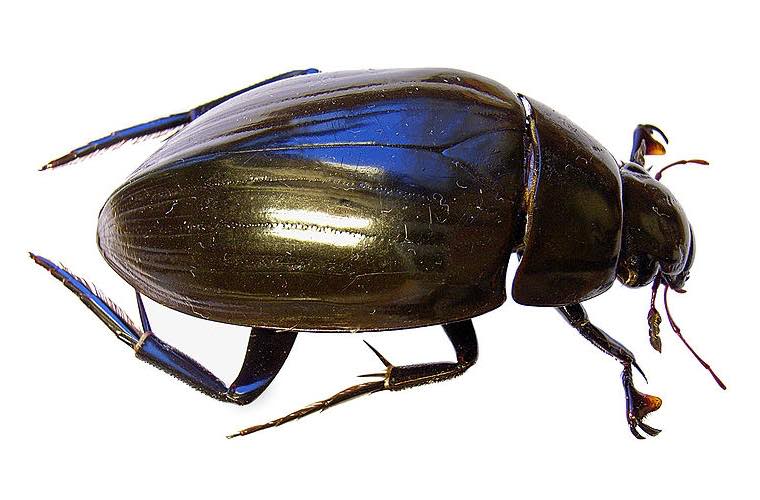
The Great Silver Water Beetle

The Grizzled Skipper Butterfly can be found across southern England in the Spring. It is usually found on sparsely vegetated habitats. This photo was taken on Dungeness.
This butterfly is part of the Skipper family and is small in size. It has a wing span ranging from 22-29mm. It occurs in small colonies of less than 100 adults. The unmistakeable black and white pattern is how they get their name.
They emerge in late April and fly until the end of June. There is usually only one generation each year. They love the warmth and will bask in the sun for long periods of time. The male is territorial and will chase any butterfly, regardless of size, away from its area.
The Grizzled Skipper mainly feeds on Buttercups, Ragged Robin, Bugle and Bird's-foot Trefoil.
The number of Grizzled Skippers is in decline, it is therefore a priority species for conservation.
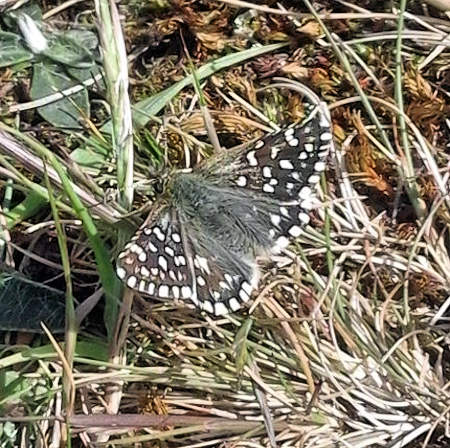
The Grizzled Skipper

Romney Marsh is one of the very few places in Britain where you can find the Marsh Mallow Moth. It is restricted to a few scattered localities in Kent and East Sussex where it inhabits marshes, fens, river banks and ditches.
The species is single-brooded. The eggs are laid in September either on or near the food plant. The larvae hatch in May the following year and bore into a growing shoot of the food plant. They gradually work their way down to the rootstock, feeding here until they emerge in July and form a pupa in the soil among the roots. With a wingspan of 40-50mm, the adult Marsh Mallow Moths fly at night from late August to early October.
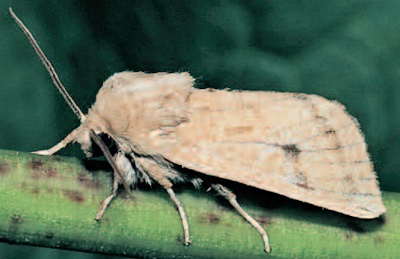
The Marsh Mallow Moth

The Pigmy Footman Moth is a rare species found only in parts of East Anglia and Kent. It inhabits shingle and sand dunes, for which Romney Marsh is well-known.
The Dungeness National Nature Reserve has a large supply of lichen on which the larvae mainly feed.
There is one generation per year and they can be seen in June, July and August. They are readily attracted to the light.
They have a wingspan of between 24-28mm, which is smaller than similar species.
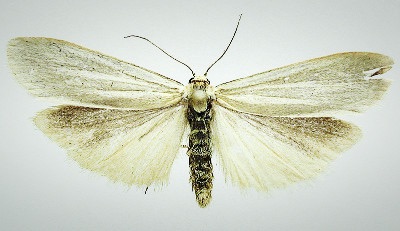
The Pigmy Footman Moth

The short-haired bumblebee is one of 27 bumblebee species native to the UK. It was once widespread across the south of England, occurring as far north as Humberside, but post-1950’s its population distribution became isolated and patchy.
Its decline was almost certainly the result of the loss of the species-rich grassland habitats on which it depends. It was last recorded near the Dungeness Nature Reserve in 1988 and was declared extinct in 2000. In 2009 a project was set up to reintroduce the short-haired bumblebee in the UK by establishing a corridor of suitable bumblebee habitat through Dungeness and Romney Marsh, spreading into East and North Kent.
In the spring of 2013 100 queens were collected from Sweden and quarantined at the University of London. 49 of these queens were released at RSPB's Dungeness Nature Reserve but they struggled in the cold, wet conditions that summer. Worker short-haired bumblebees have been spotted at the site following this release, but no queens have yet been recorded. A second release of queens were released in May 2014.
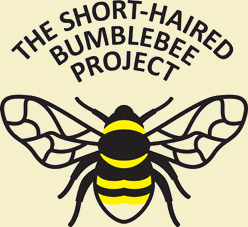
The Short Haired Bumblebee Project Logo
Gardeners can help the bees by placing nectar-rich plants to provided them with an ideal habitat. Gardens are extremely important for bumblebees, and vice versa. Bees need flowers for sustenance, and flowers need bees for pollination. But it's important the flowers you grow provide the food bees need.
Most double flowers are of little use, because they're too elaborate. Some are bred without male and female parts, while others have so many petals bees can't get to the nectar and pollen to collect it. This is the main reason why single dahlias are popular with many bees, while doubles are usually ignored. The single-flowered rose family, which includes crab apple, hawthorn and potentilla, seem to be irresistible to our buzzing friends, as are the flowers of fennel, angelica and cow parsley, and sedums. Tubular-shaped flowers, such as foxgloves, snapdragons, penstemons and heathers, are also all-favourite feeding places for bees.
![]() Bumblebees Thriving on Romney Marsh, BBC News item
Bumblebees Thriving on Romney Marsh, BBC News item
![]() Pollen & Nectar rich plants for your garden by season
Pollen & Nectar rich plants for your garden by season
![]() Reference and more information
Reference and more information
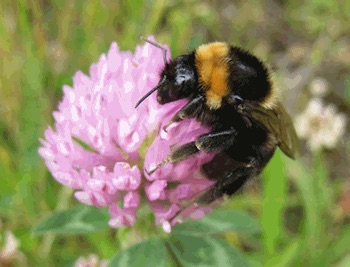
The Short Haired Bumblebee

The Sussex Emerald moth is a rare and endangered species unique to Dungeness and Romney Marsh and recent years have seen numbers falling.
The Susex Emerald moth is an attractive pale green colour with reddish flecks at the edges of the wings. The forewings are crossed by two wavy white lines, and the hindwings have just one cross-line. The striking caterpillars are yellow-green in colour with a red line along the back, which may occur as a row of dots. Two spikes that are tipped with red protrude out from the body and reach over the head, which is drawn into two points.
The moth feeds on wild carrot, which is also a favourite food for local rabbits. Local landowners have been working with Natural England Butterfly Conservation and Romney Marsh Countryside Project to grow wild carrot in trial areas, and their efforts have been worthwhile with moth larvae recorded in each of the plots. To give the moths a helping hand, the partners have each set up trial sites where the vegetated shingle habitat has been fenced off from rabbits. Wild carrot seed, collected locally, was sown in the plots and following surveys carried out this spring the project team has revealed good news that Sussex emerald moth larvae have been found in each of the fenced-off sites.
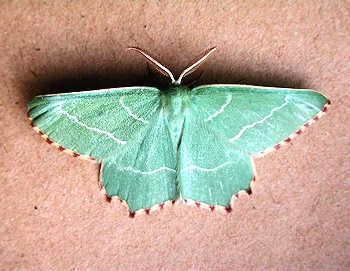
The Sussex Emerald Moth



